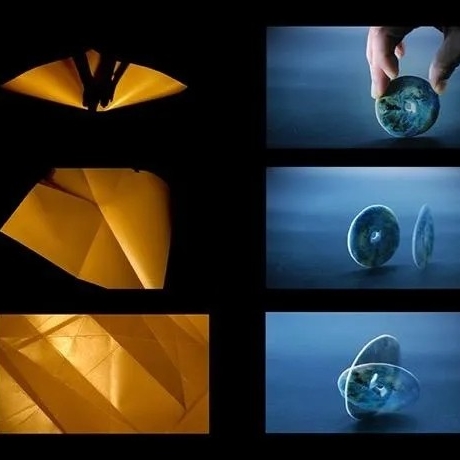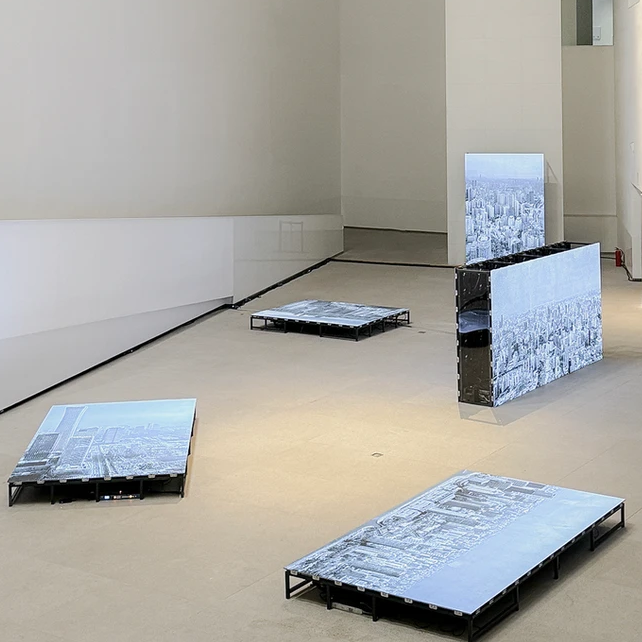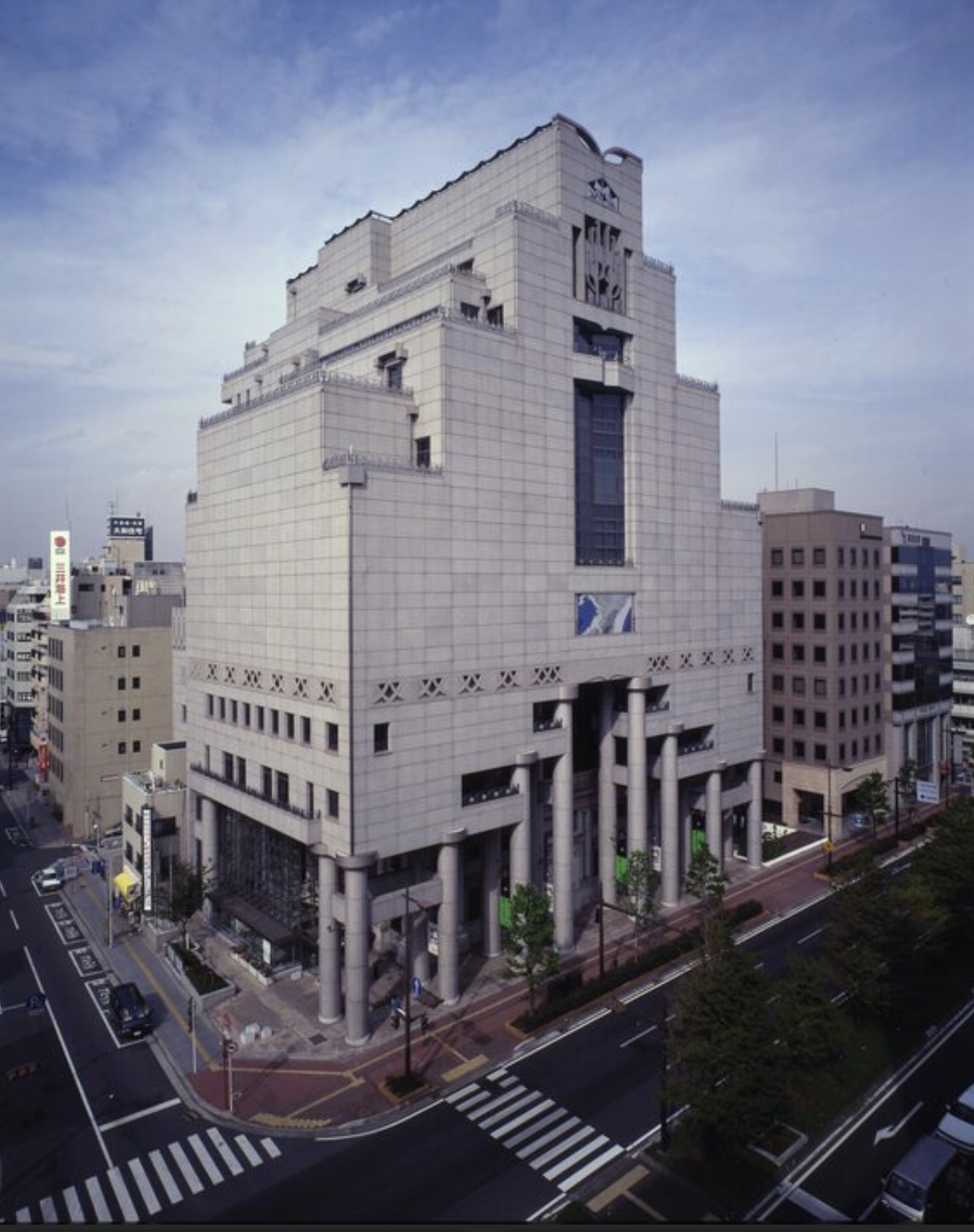
Chiba City Museum of Art
Chiba City Museum of Art was established in 1995. It mainly curates and researches contemporary art, Ukiyoe painting and artists related to Chiba. It is very influential in the Japanese contemporary art scene. The museum has a total collection of more than 9500 pieces, including more than 3000 pieces of Ukiyoe paintings and collections. Its famous collection of works include early works of Yayoi Kusama, KawaraOn, Shiraga Kazuo, Suga Kishio, and other contemporary art since the 1970s to the important Ukiyoe paintings such as Ito Shinsui, Kitagawa Utamaro and so on.
In the past, the museum held exhibitions of important artists in modern times, such as Paul Klee exhibition, Georges Rouault Solo Show, Picasso and Matisse 20th century painter exhibition and Chagall exhibition. The retrospective exhibitions and group exhibitions of famous Japanese contemporary artists such as "Sugimoto Hiroshi's solo exhibition", "Miyajima Tatsuo's solo exhibition", "Kusama Yayoi's collection ", "Swiss contemporary art exhibition", etc.
The architectural structure of the museum retains the old modern Japanese Renaissance style buildings built in 1927, and the new buildings that were built within the surrounding old buildings. Its architecture is one of the 100 public buildings selected by the Ministry of Construction of Japan.
Chiba City support for art and culture has realized the renovation and expansion of the museum this year, and was re-opened in 2020.
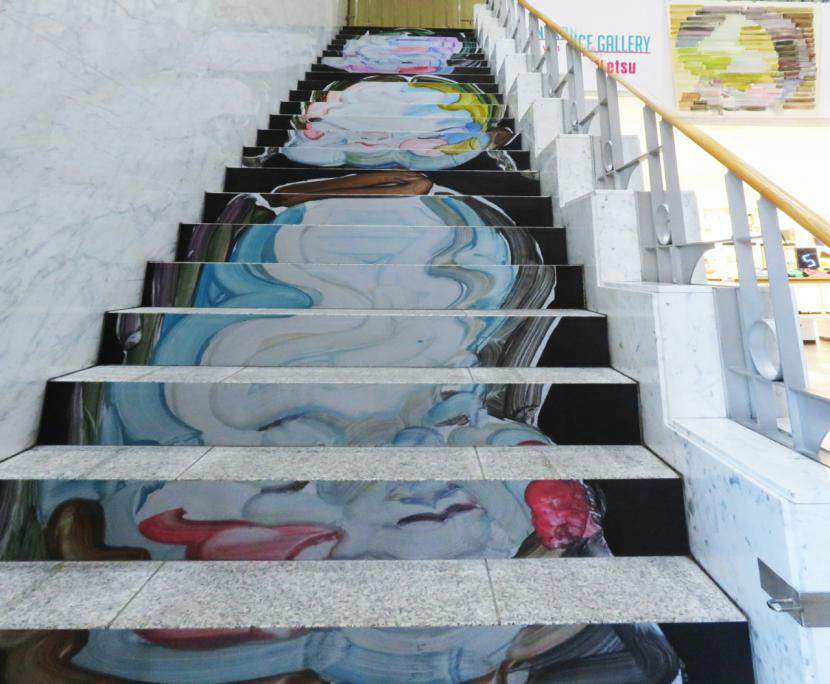
EGAMI Etsu solo show in Chiba City Museum of Art
EGAMI Etsu's solo exhibition in Chiba City Museum of Art opened on November 3rd. The exhibition span is from November 3 through to December 13, which is the same period as Miyajima Tatsuo's retrospective exhibition in Chiba City Museum of Art. Tatsuo Miyajima, a famous Japanese artist, participated in the Venice Biennale on behalf of the Japanese pavilion in 1999. EGAMI Etsu is a young artist that is active in Tokyo, Germany, Beijing, Hong Kong and other international stages. From her overseas experience to the consistent production with the theme of the essence of communication, she is highly praised by the international community. In 2020, as the youngest artist, she was listed on the Forbes 30 UNDER 30, and won the finalist of Asian Art Prize in 2019. She was recommended for VOCA2020 which is the most important exhibition for choosing emerging artists, and she exhibited her works in Ueno-Royal Museum.
Etsu Egami was born in Japan. She studied abroad at HfG Karlsruhe (The Karlsruhe University of Arts and Design) in Germany, Central Academy of Fine Arts in Beijing. Currently, she studies at the Central Academy of Fine Arts for a doctor’s degree. She reconsiders the possibility of communication from her wide experience of overseas and studies art from various academic fields such as linguistics to sociology, anthropology, and philosophy including the origin of languages. Particularly, she devotes herself to a reconsideration of society by words. Her “project” gained international acclaim for the site-specific field survey and documentation. These factors have deepened the theme of “communication” and she was highly praised internationally.
As the youngest artist, she was shortlisted for a sovereign art foundation award as an Asian Art Prise2019 finalist, also as an outstanding Asian artist, her works were collected by the Moscow Garage Museum of Art. Most recently, solo exhibitions such as “In to the light… Etsu Egami solo show” (Germany), “Dialogue beyond 400 years” (London), “This is not a Mis-hearing game” (Beijing), “Dialogue: 4,000 years-Etsu Egami Exhibition” (Chiba City Art and Culture Newcomer Award Winning Project) were held. In addition, her graduation works received a prize and were collected by CAFA Art Museum.
EGAMI Etsu RAINBOW
EGAMI Etsu discussed the essence of communication in the exhibition of the art museum, name "the form of communication". In addition to the painting work, she exhibited the local works through the interaction of the internal structure of the museum. At the same time, it makes the participating works interact with the audience to let the audience experience the essence of communication.
The series "Rainbow" on exhibition comes from the agony of artists' overseas experience. When artists encounter communication barriers overseas, they deeply feel that it is difficult to convey their true meaning to people. At that time, communication was very distressing and entangled with artists like gray areas.
When studying in Germany, the course of social investigation, after field of investigation and a large amount of literature, artists' understanding of communication gradually changed. As a form of complete coexistence, there are parallel lines, rather than mutual respect? The artist said, "I felt a strong sense of rainbow color at this time."
Every color of the rainbow is pure and beautiful, each shining brilliantly, coexisting. A Rainbow is also a symbol of dreams and hope. Here, the language of the rainbow color is very consistent with the mood of the artist, which resonates with each other. Parallel lines are also used in her works, which are reminiscent of rainbows. The Rainbow colors are a symbolic language of artists' understanding of communication at this stage.
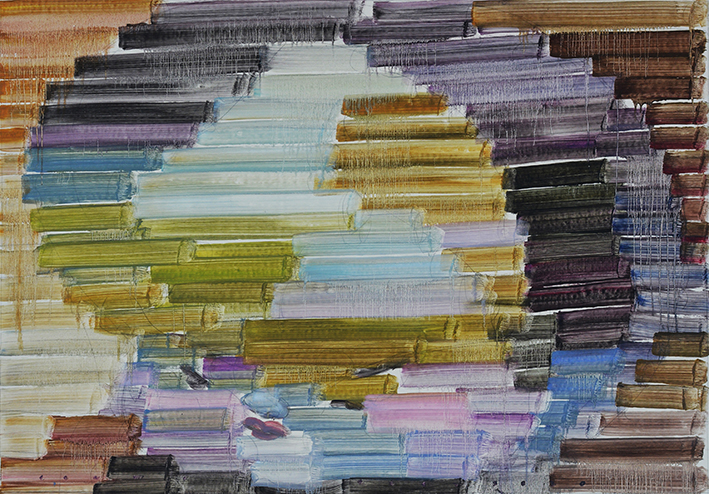
EGAMI Etsu, RAINBOW ⒸEtsu Egami

Miyajima Tatsuo and Etsu Egami
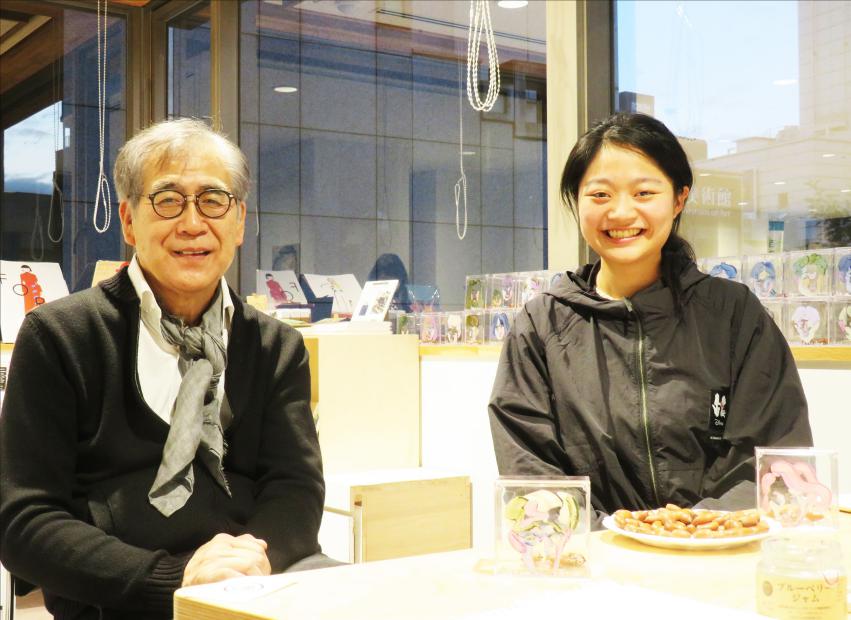
Director of Mori Art Musuem in Japan : Nanjo Fumio and EGAMI Etsu
Mis-hearing game (Acorn project)
The communication between the artist and the participants is through a Mis-listening game. Language is not only a tool for information transmission, but also an obstacle to it. EGAMI Etsu explores human nature and feeds back to society from the origin of language. If the tower of Babel in the Old Testament of the Bible was abandoned halfway because of a language barrier, there would be more disputes and misfortunes due to misinterpretation and the misinterpretation of language. Even this unfortunate result will be misheard and misinterpreted, and then enter into a difficult cycle. Starting from the origin of language, the meaning of communication is re-examined through overlapping images.
The so-called mishearing game is to communicate in a language that the other party does not understand. The other side intuitively judges the semantic meaning from the pronunciation, which is called mishearing. (e.g. Yada, duck eggs, etc.). Sudden and random results are unexpected and often make people laugh or cry.
At the same time, we can visualize the process and form of communication based on the strange conversation with the audience, the question and answer conversation. Let the participants write their feelings and names on the acorns. The cultural relics of Chiba City, which are 4000 years ago, are the remains of the city. Most of the acorns found in them prove that the ancient Chiba people ate acorns. At the same time, an acorn is also the artist's memories of her hometown when she was young: picking acorns with friends in the Chiba park next to the kindergarten. The transparent box sealed the memory of communication. The Oak seed may sprout one day, which is a process of dialogue with participants on the spot, a symbol of memory, and a new beginning of communication.
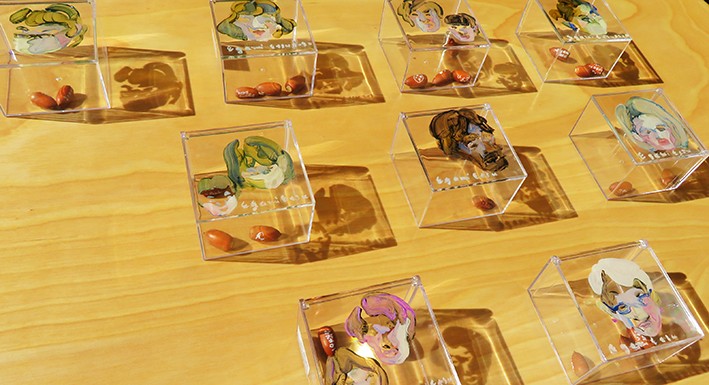
Mis-hearing game (Acorn project) ⒸEtsu Egami
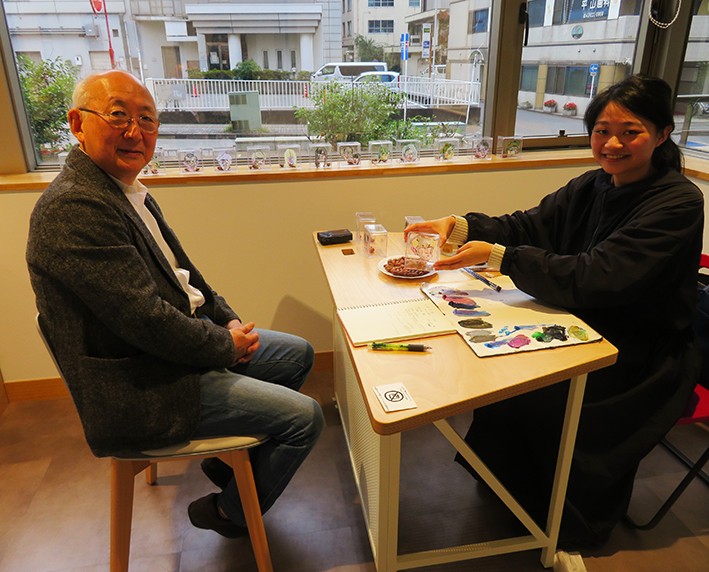
Director of Chiba City Museum of Art KAWAI Masatomo and EGAMI Etsu

Gekkan Gallery Magazine introduce EGAMI Etsu's work
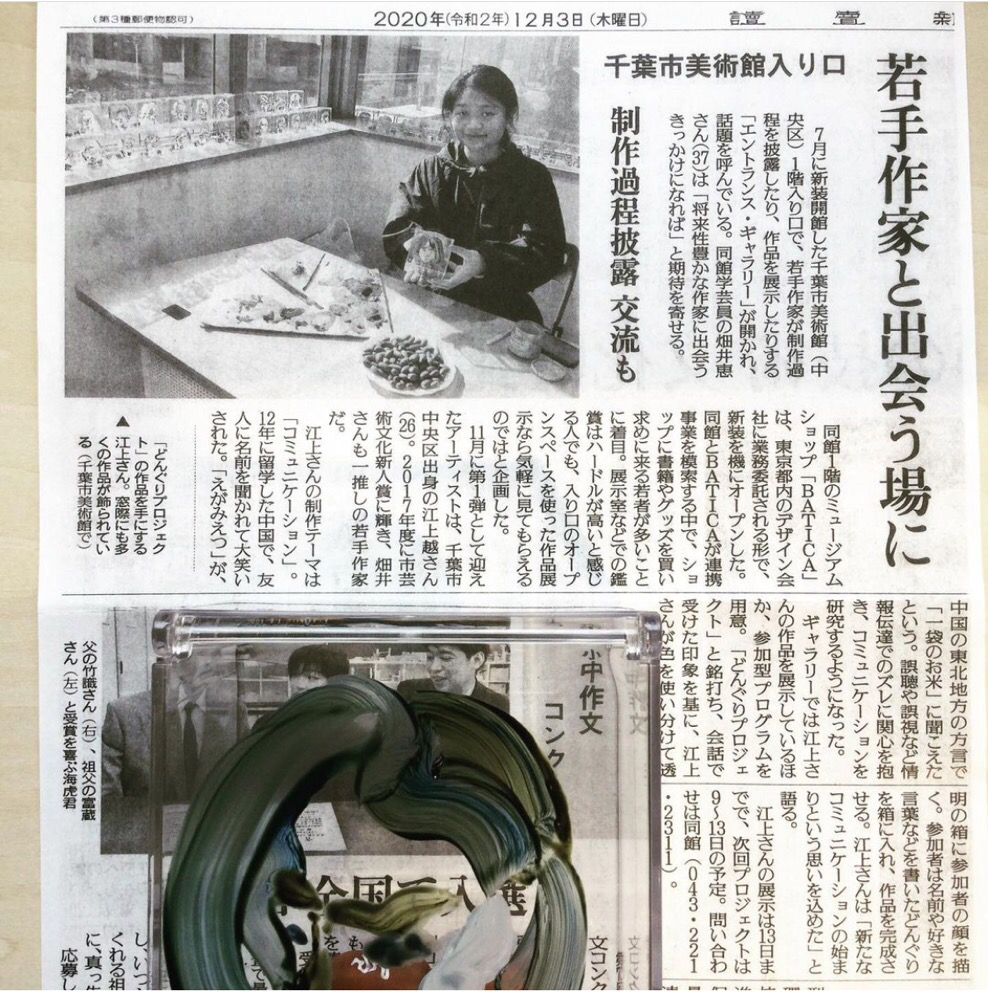
The Yomiuri Shimbun report EGAMI Etsu solo exhibition in Chiba City Museum of ArtThe international forum of in CCMA with the curator of Center de Pompidou and UCCA
Under the influence of the pandemic, it is difficult for foreign visitors to come to Japan to see the exhibition. In this exhibition, an international forum was held on November 28. You Yang, Deputy Director of UCCA Contemporary Art Center, Julie Champion, curator of Pompidou Art Center in Paris, Japanese art critic Chiba Chengo, and artist EGAMI Etsu were invited to talk. Their translator invited DuPont Japanese Corporate Executive Director Hayashi Ryuihi. The topic of the forum takes "The Shape of Communication" as the breakthrough point and discusses it from various angles.
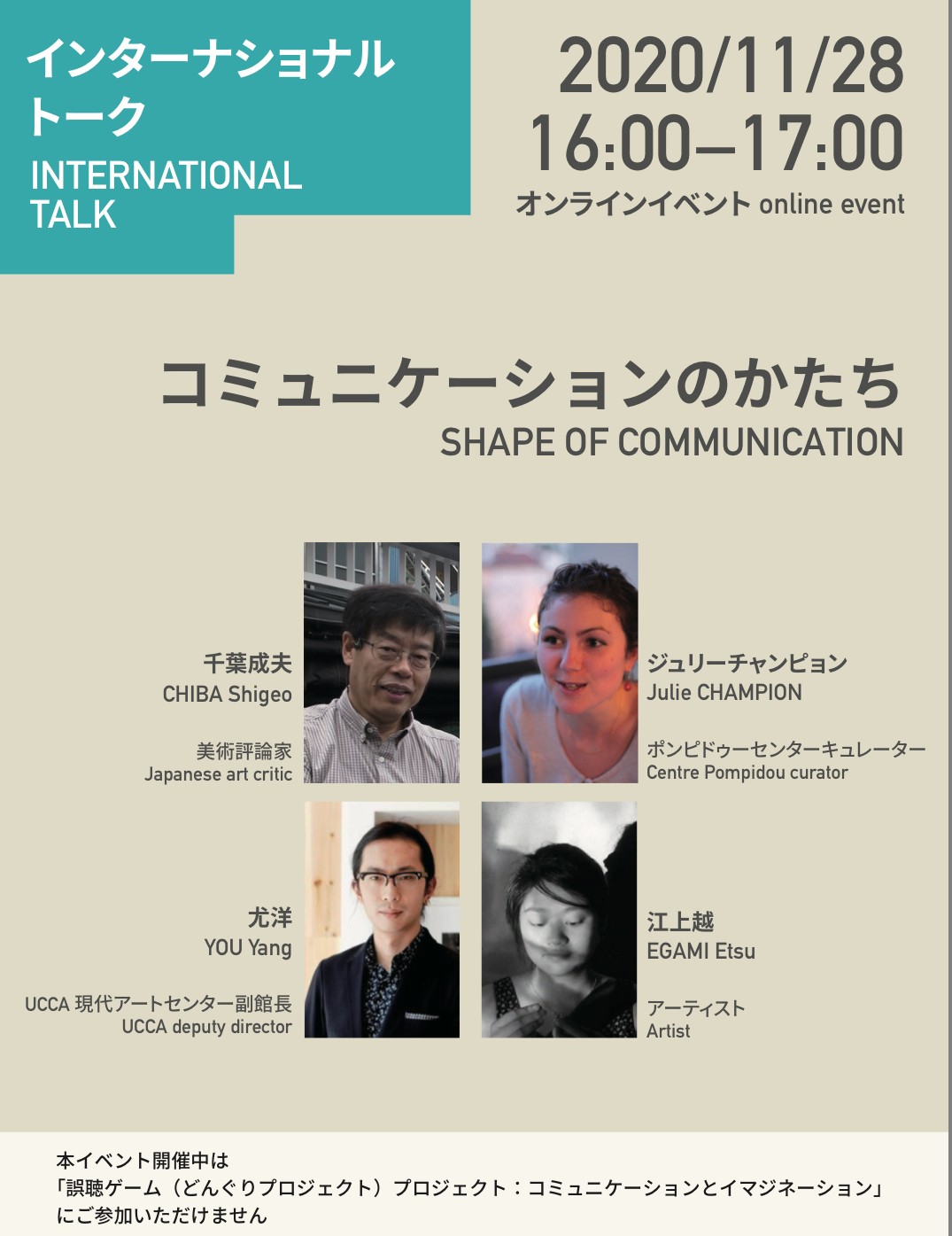
Poster of International talk
Courtesy of the artist.




